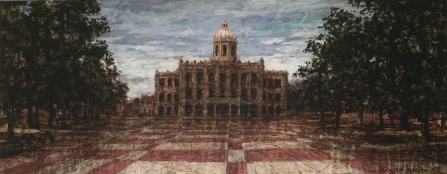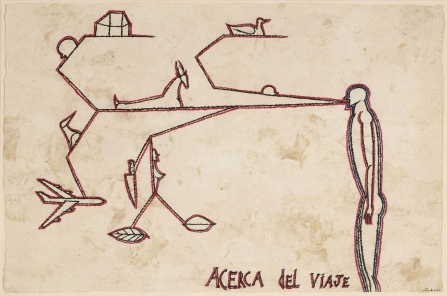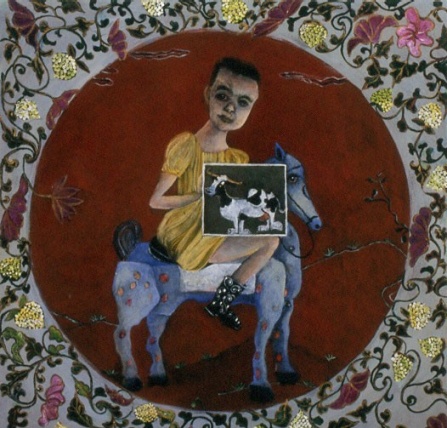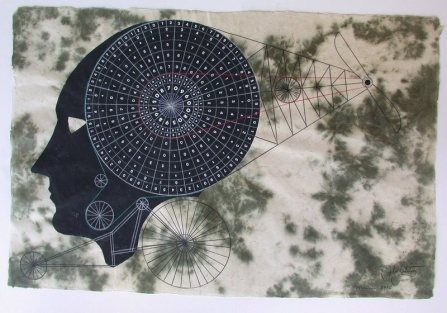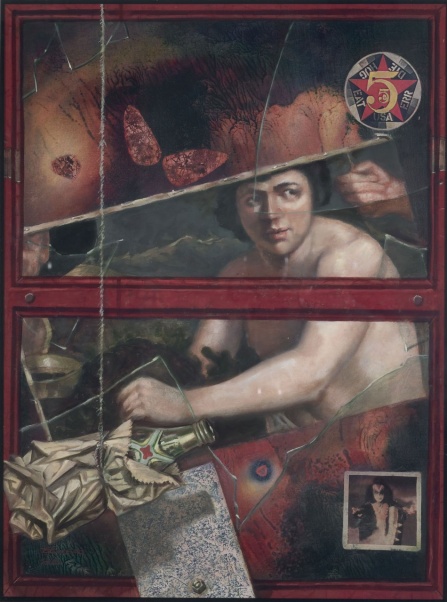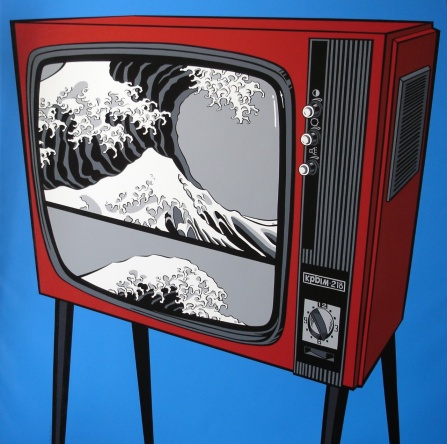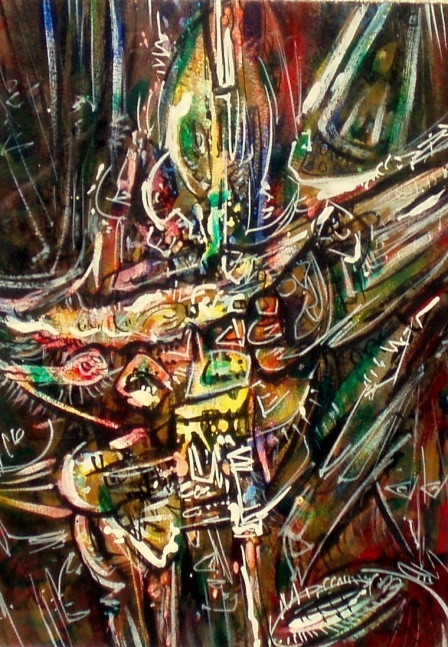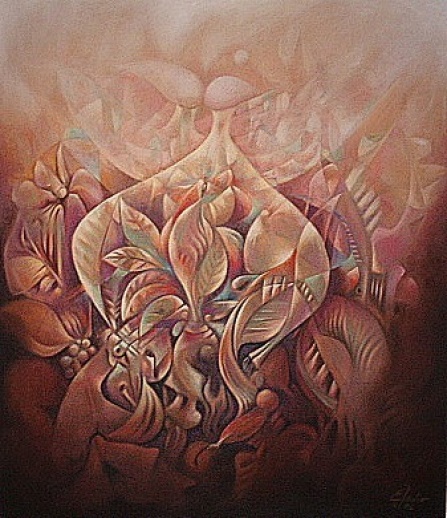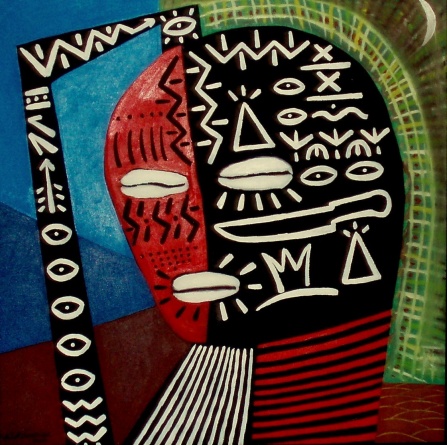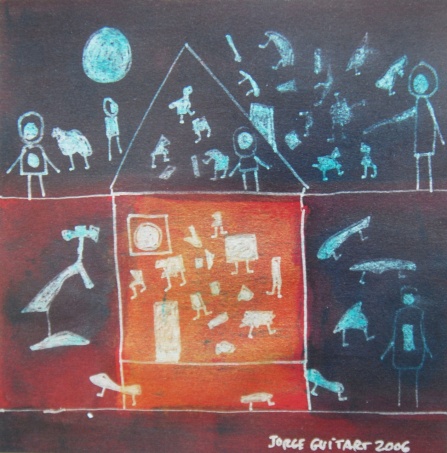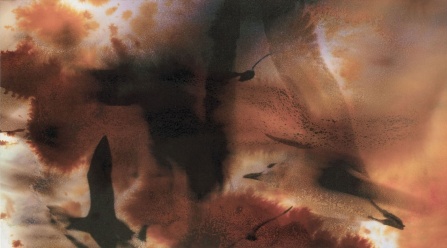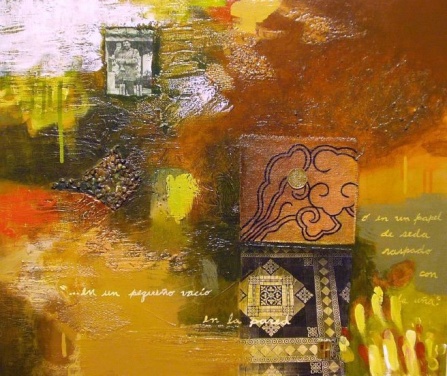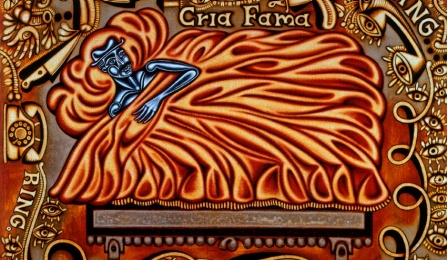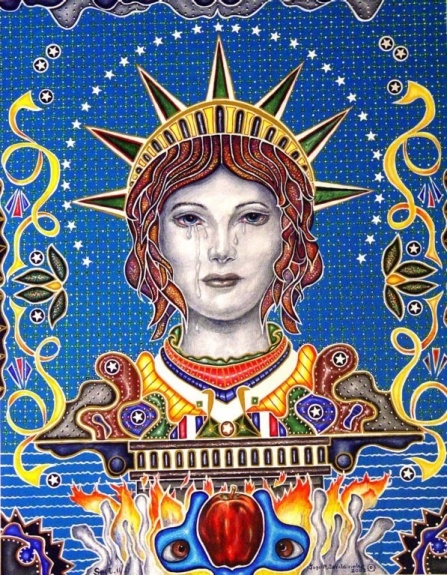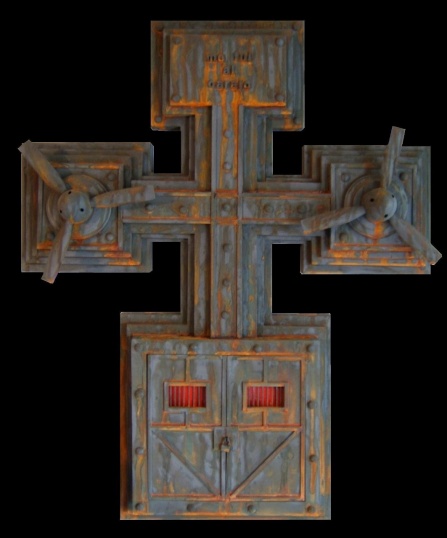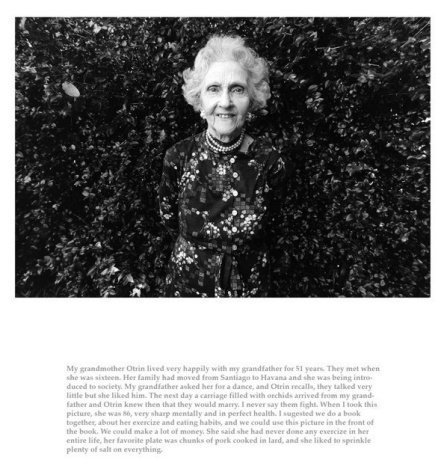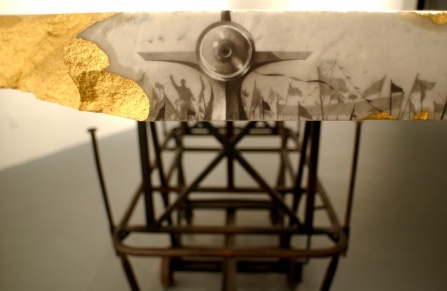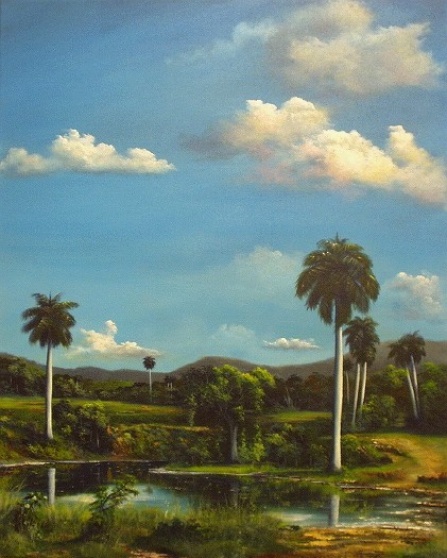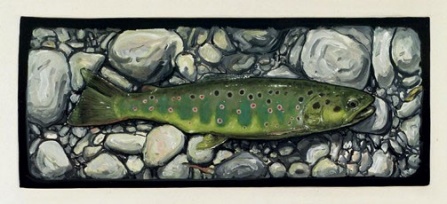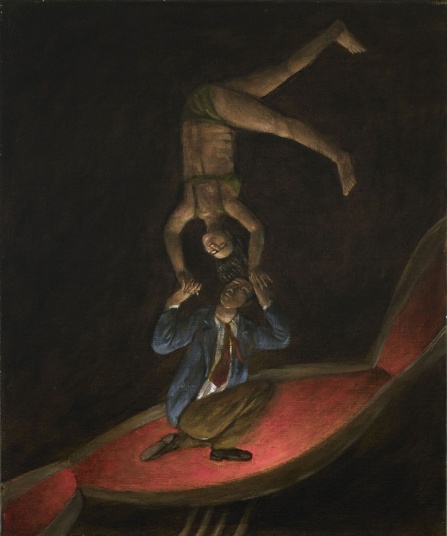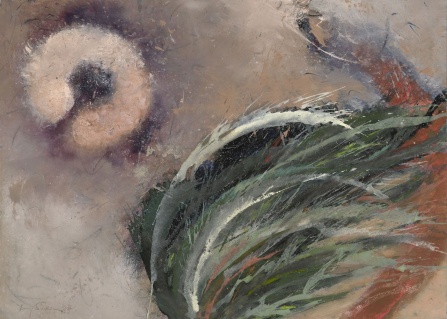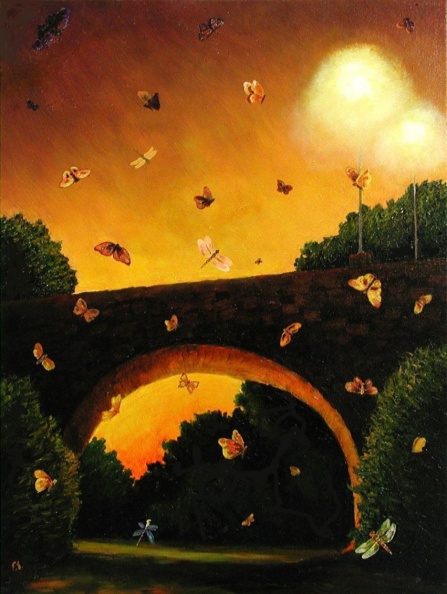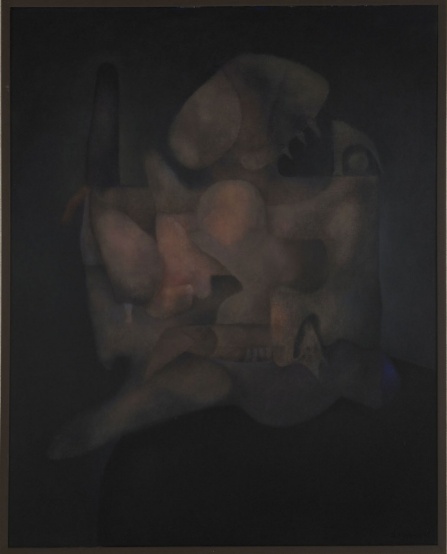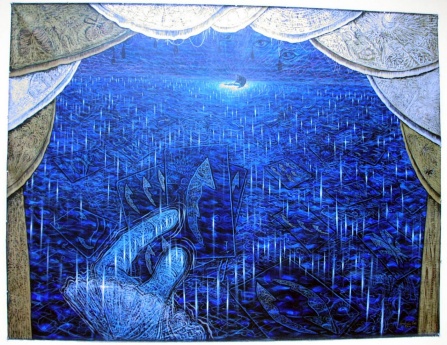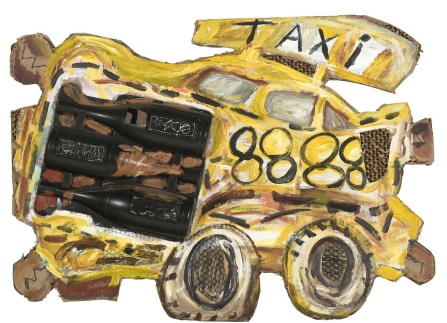Cuban Art Outside Cuba
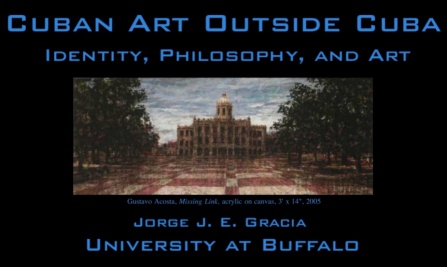
This project is about Cuban artists who work, or have worked for significant periods of time, outside of Cuba, and primarily on artists who were active at the time this project was initiated (2006). Its focus is on painting, although some drawing, sculpture and photography-based art is also included.
The project premiered with the exhibition, Layers: Collecting Cuban American Art, initiated by the UB Art Galleries.
The aim of the project is to create a record of these artists, providing some biographical information, a brief interview, contact details, and a sample of the work (usually images of one or two significant and characteristic pieces). The project is also intended to illustrate how different artists have dealt with issues of immigration, diaspora, and memory in their art and lives, and to serve as the basis of a philosophical reflection on issues raised by how they have negotiated their identities as Cubans, Americans, and Cuban Americans.
Curators
- Lynette Bosch
- Jorge Santis
- Elizabeth Cerejido
- Ricardo Viera
- Jesús Rosado
- Olga Viso
On this page
This project involves the establishment of a website, administered through the State University at Buffalo and supported by the Samuel P. Capen Chair in Philosophy, about Cuban artists who work, or have worked for significant periods of time, outside of Cuba, and primarily on artists who were active at the time this project was initiated (2006). Its focus is on painting, although some drawing, sculpture and photography-based art will also be included. The aim of the project is to create a record of these artists, providing some biographical information, a brief interview, contact details, and a sample of the work (usually images of one or two significant and characteristic pieces). The project is also intended to illustrate how different artists have dealt with issues of immigration, diaspora, and memory in their art and lives, and to serve as the basis of a philosophical reflection on issues raised by how they have negotiated their identities as Cubans, Americans, and Cuban Americans.
Permission from collectors and the artists has been secured to display images of the works included and the texts of the interviews, but no use by anyone else is allowed without prior written permission. The project was initiated in conjunction with a National Endowment for the Humanities (NEH) Seminar that took place at the University at Buffalo June 12-30, 2006, under the direction of Jorge J. E. Gracia, Lynette Bosch, and Isabel Alvarez Borland, on the topic of "Negotiating Identities in Art, Literature and Philosophy: Cuban Americans and American Culture." The Seminar included an art exhibition, "Layers: Collecting Cuban-American Art," directed by Gracia and coordinated by Lynette Bosch, at the UB Art Galleries, Center for the Arts.
This website is exclusively intended for scholarly purposes; it seeks to be a source of accurate information for anyone interested in the development of Cuban art. In addition to entries about artists, it contains or will contain some interviews with curators, private and institutional collectors, and gallery directors. The website refrains from making judgments of value as to the quality of the work or the stature of the artists included. An effort will be made to include artists from all over the word, and in particular artists who have been marginalized for one reason or another.
No political considerations have played, or will play, a role in this project. Artists who work exclusively in Cuba have been excluded because they draw considerable support from being in their original cultural and national context. Cuban artists working outside Cuba are on their own, and frequently work in contexts that are hostile or indifferent; they tend to be neglected and marginalized, a common fate to those who emigrate from their lands of origin.
CAOC Artists, Interviews, Artwork
Acosta, Gustavo
Gustavo Acosta is a Cuban artist who was born in 1958, in Havana, Cuba. He attended the Superior Institute of Art (ISA), and the School of Visual Arts San Alejandro, both in Havana, Cuba. He currently lives and works in Miami, Florida, United States. Acosta’s work can be found in many private collections around the world, and institutions such as the Museum of Contemporary Art, MOCA, in Miami, Florida; the Nassau County Museum of Art, in New York; and the National Museum of Fine Arts, in Havana, Cuba.
Gustavo Acosta, Missing Link 2005
Acrylic on Canvas, 3' x 14"
Azaceta, Luis Cruz
Luis Cruz Azaceta (Havana, 1942) is an artist whose work carries the indelible imprint of displacement. The solitude, cultural and linguistic isolation, and the certainty of no longer belonging anywhere has marked his view of the world since he immigrated to the United States from Cuba at the beginning of the sixties. Throughout his career, his works have continually exuded that feeling, whether veiledly or explicitly. His perspective is that of a displaced individual attempting to find a personal route in the midst of that strange labyrinth that is identity. In an interview with Edward J. Sullivan in 1998 on the occasion of his exhibition, “Bound,” in New York, Luis Cruz Azaceta would state: “What I try to do in my work is to go from the particular to the universal statements.” This strategy is precisely what has saved him from the ordinary and has allowed him to gain important standing within the mainstream of contemporary American art.
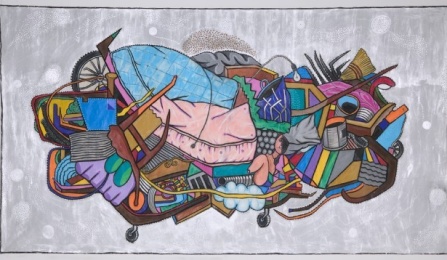
Luis Cruz Azaceta, Cart (Homeless), 2008
Acrylic, charcoal, enamel, shellac on canvas, 96” x 174"
Courtesy of Arthur Roger Gallery, New York
Bedia, José
José Bedia was born on January 13, 1959, in La Havana, Cuba, the city where he grew up and studied in the capital district of Luyanó in the municipality 10 de Octubre. From an early age he excelled in drawing, comics and illustration, and as a teenager he joined the famous San Alejandro Academy. As a talented student, he developed the formal skills that he has been using during the course of his long and prolific career. A very well known drawing performed in these early years, somehow defined him: A perfectionist academic portrait, with an elongated style, portraying an Amerindian of the primitive tribes of the United States of America. In the portrait, the protagonist, an Indian figure riding a horse while shooting a gun is aiming backwards, as if turning his back towards the viewer (us).
Known for his Neo-Primitivistic figurative style. Bedia’s large-scale paintings are inspired by his Santería faith, an amalgamation of Yoruba, indigenous, and Christian beliefs, with his works frequently depicting mythical elements, altars, and other sacramental imagery, often serving as a pointed critique of colonialism. Bedia participated in the first Havana Biennial in 1984, and later was selected to represent Cuba at the Venice Biennale in 1990. Two years later, he was awarded a Guggenheim Fellowship in New York. The artist has shown work all over the world, notably including a solo show at the Fowler Museum in Los Angeles.
José Bedia, Acerca del Viaje, 2001
Mixed media on amate paper1, 5 1/2" x 23 1/2"
Bencomo, Mario
Mario Bencomo was born in Pinar del Río, on July 26, 1953. As an adolescent, he left Cuba alone for Spain. In 1968, at the age of 14, he arrived in New York City from Madrid. He received an AA from Miami-Dade College in 1975. He is based in Miami. Bencomo began exhibiting in Miami in 1979, at the Library Gallery at Miami Dade Community College's North Campus. He has received a Cintas Fellowship Foundation Award from the International Institute of Education in New York City (1984-85), a Purchase Award from Second All-Florida Biennial (1987), and an Award from the Boca Museum's 38th Annual all Florida Exhibition (1989). In 1992-93, he was awarded an Individual Artists Fellowship Award in Painting from the Division of Cultural Affairs, State of Florida. Selected Public Collections: Archer M. Huntington, Museum of University of Texas, Austin, Texas; Detroit Institute of Art, Detroit, Michigan; Metropolitan Museum of Art, New York; Museum of Modern Art of Latin America, Washington, D.C.; Panama Contemporary Museum of Art, Panama; Polk Museum of Art, Lakeland, Florida; Museo Nacional de Bellas Artes, La Habana, Cuba; and Ponce Art Museum, Puerto Rico.
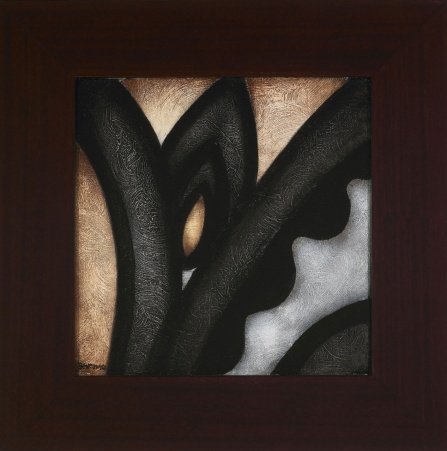
Mario Bencomo,
If Quebec Were in the Tropics II, 2006
Acrylic on canvas, 12" x 12"
Brito, María
María Brito was born in Havana, on October 10, 1947. She emigrated to the United States in 1961, as part of the Peter Pan Operation. She settled in Miami, receiving a BA from the University of Miami (1969), a BBA from Florida International University (1976), and an MFA from the University of Miami (1979). Brito began exhibiting in Miami in 1978. Her first exhibition was at The Twentieth Annual M. Allen Hortt Memorial Competition and Exhibition, Museum of Art, Ft. Lauderdale. Brito has been the recipient of several prestigious awards including, a Florida Arts Council Fellowship (1979), a Cintas Foundation Fellowship from the International Institute of Education in New York City (1981), an Artist-in-Residence Fellowship from the Djerassi Foundation (1983), a National Endowment for the Arts Fellowship (1984), another Cintas (1985), a Florida National Endowment for the Arts Fellowship (1988), a Pollock-Krasner Foundation Grant (1990), a South Florida Consortium Fellowship (1992), a Virginia A. Groot Foundation Grant (1994) and an Individual Artist Fellowship from the Florida Department of State (1996). Selected Collections: Olympic Sculpture Park, Seoul, Korea; Archer M. Huntington Museum, Austin, Texas; Art in Public Places, MetroDade Center, Miami; National Museum of American Art, Washington, D.C.
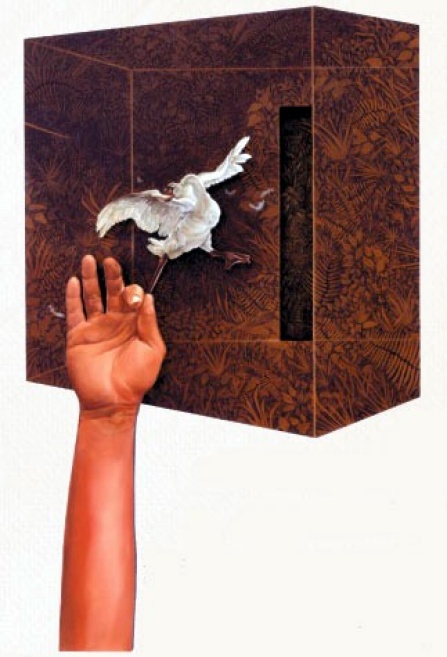
María Brito, Self-Portrait as a Swan, 2001 Oil on wood, 30" x 37"
Calzada, Humberto
Humberto Calzada was born in Havana, on May 25, 1944. He emigrated to the United States in 1960 and settled in Miami. He received BA and MBA degrees from the University of Miami (1966 and 1968). He began exhibiting in Miami in 1975 at the Bacardí Gallery. Calzada received a Cintas Foundation Fellowship from the International Institute of Education, N.Y.C. (1981), a Purchase Award, Museum of Modern Art of Latin America, Organization of American States, Washington, D.C. (1978) followed by a Painting Fellowship from the Fine Arts Council of Florida (1980) and a second Cintas (1981). Among the collections in shich his work is found are the following: Denver Art Museum, Colorado; Panama Contemporary Museum of Art, Panama; Ponce Museum of Art, Puerto Rico; Museum of Modern Art of Latin America, Washington, D.C.
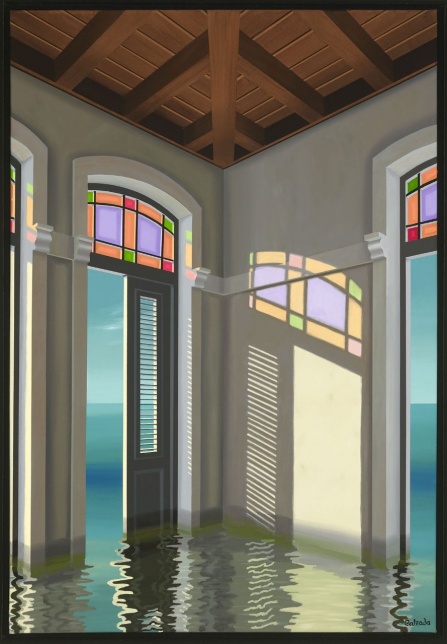
Humberto Calzada , Island in Crisis, 2005
Acrylic on canvas, 32" x 22"
Cancio, Francisco
Artist's statement:
My full name is Juan Francisco Cancio Lazo, I was born in Havana on November 6, 1967. I am from Santiago de las Vegas. My general studies were between schools in my town, Melena del Sur and Pinar del Rio. I returned to Havana to finish pre-university and I suspended maths in the finals and not passing grade - I was going to study medicine - and not being able to enter, I grab the military service and at 9 months they built my unit for Angola, where I spent two years. When I returned from Angola I finished my studies in the faculty of my town and in 1992 I entered San Alejandro, from which I graduated in 1996.
I left Cuba in 2000 invited by an art foundation from Argentina. I had to exhibit in the province of Salta and I did the whole program, but I was surprised by the love and I came back twice more, until I decided to stay in 2003. As an artist life is always hard, especially if you are a foreigner and more if you want to live on what you do. I had to set up a paint shop and little by little I developed it, until I put together something big that gave me enough to live. I began to teach drawing and painting classes and then extended the program with sculpture and engraving classes. Little by little, I was making my way in Salta and Buenos Aires, and now I am preparing several samples, two groups and one staff in Buenos Aires.
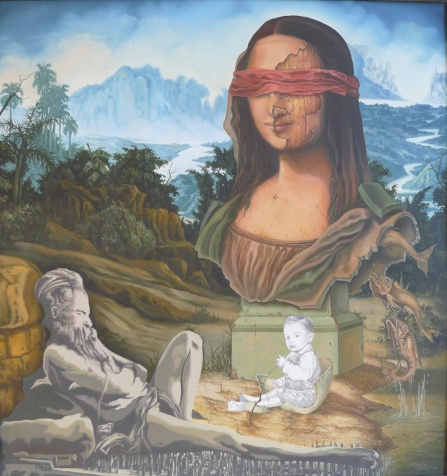
Francisco Cancio
Carulla, Ramón
Ramón Carulla was born in Havana (Cuba) on Decembr 7th, 1936 and lives in the United States since November 1967. Had his first show in the United States shortly after arriving in the United States, and from that year on has shown his work widely throughout the United States, Latin America and Europe. He has participated in personal and group exhibitions in Canada, Venezuela, Mexico and Spain, and also in cities in the United States such as Miami (Florida), Birmingham (Michigan), Morristown (New Jersey), Atlanta (Georgia), Dallas (Texas), Naples (Florida), New York City, and Washington, D.C. He has also participated in more than thirty group shows in museums and art galleries, such as the Lowe Art Museum (Coral Gables, Florida), The Museum of Fine Arts (Montreal, Canada), The International Monetary Fund (Washington, D.C.) and The Art Expo (New York City). Also, has lectured about his work at the Cranbrook Academy of Art (Bloomfield, Michigan), Wayne State University (Detroit, Michigan), and The University School (Cleveland, Ohio). His work has been collected, among others by The Detroit Institute of Art, The Cincinnati Art Museum, The Museo Tamayo (Mexico City), The Cultural Institute of Puerto Rico (San Juan) and The Societe DÁrtistes International (Paris). Among prizes received: First Prize at the VI Graphic Biennial of Latin America (1983; San Juan, Puerto Rico), the Silvia Daro Dawidowics Award for Painting (1980; Metropolitan Museum and Art Center; Coral Gables, Florida) and the Samuel Golan Award (1982, Fine Art Auction Exhibition; CH 2, Miami, Florida). He is also a twice recipient of the Cintas Fellowship (Institute of International Education; United Nations, New York), in 1973-1975 and 1979-1980.
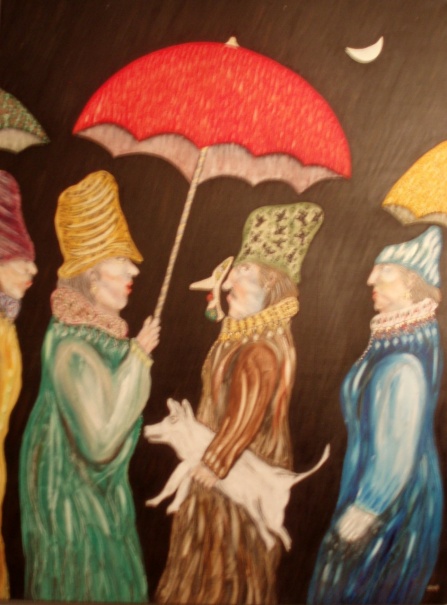
Ramón Carulla
Coego, Harold
Artist's Statement:
I consider myself to be an outsider observer of the modern panorama. Reflecting in my fractured mirror every corner of its sharp reality. Like a flesh and bones computer, absorbing and projecting with pumped blood and little electric impulses, images and scenarios. I believe there is an ancient internal call for an organic representation of our surroundings as a way to understand it. I use this as a tool to analyze a much larger picture of our everyday events. This social comprehension shapes my artwork---images are representations of `reality` through an abstract cinematographic kaleidoscope. They are visible like music to the eye telling us a story---a twisted photocopy of ourselves, or perhaps more like a dream where something is always out of place.
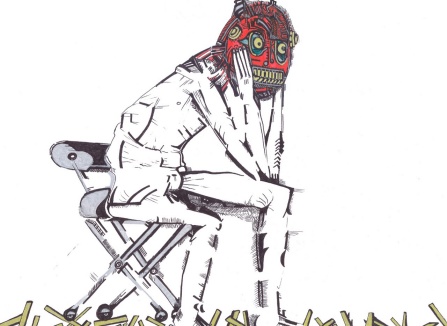
Artwork by Harold Coego
Demi
Demi was born in Camagüey, on October 6, 1955. She emigrated to Puerto Rico in 1962, and then came to the United States in 1971. She settled in Miami in 1978 and received an AA degree from Miami-Dade Community College. She began exhibiting in 1987, at the Cuban Museum of Arts and Culture of Miami. She has received a Florida State Visual Artist Grant (1992-1993). Her work is found in many collections, including that of the Fort Lauderdale Museum of Art, Fort Lauderdale.
Demi depicts an intimate universe centered upon children. She paints children whose lives have been exposed to the vagaries of the adult world. Although rooted in her personal history, these subjects are fanciful and universal, with social and political overtones, sweet-and-sour images fed by boundless imagination and a painful childhood. She combines ideas from popular culture with imagery culled from the canon of Western European art. Hence, it is possible to find in her work qualities that resonate with the art of painters as diverse as Fra Angelico, Filippo Lippi, Rousseau, Blake, and Richard Dadd.
Artwork by Demi
Estévez, Carlos
Artist Statement: Art for me is a learning process. It is my way of understanding life. My work is very connected to my own experience. What I think, what I feel, and all my dreams are contained in my artwork.
My process is similar to the process of alchemists. They were looking for the formula to make gold, and what they found instead was knowledge. My goal is to find knowledge through art. I want to translate my life experiences into images and share them with other people. I think that art is a magic form of communication and the key is to look at yourself as deep as possible so that you can communicate with the deepest territories of others.
The source of my work is the human existence. Of course, my work is influenced by what I read, which is mainly philosophy. However, I don’t transfer any concept to my art intentionally. It doesn't work that way. I read a book and I use it as fuel for my brain. What I get from readings could be far from its original intentions. I do my own interpretation and this becomes the inspiration for my work. I never know exactly what, how, and when it is going to happen, but one day an image appears that is connected with something I’ve read.
My obsession is to discover the meaning of life. Why are we here in this universe? This transcendental answer can perhaps never be answered, or perhaps it has many different answers. One thing is for sure, neither science nor history can reach the human knowledge that art achieves.
Carlos Estévez, Pensamientos Numerales, Mixed media on paper, 20" x 30", 2005
Falero, Emilio
Emilio Falero was born in Sagua La Grande, on August 18, 1947. He emigrated to the United States in 1962, as part of the Peter Pan Operation. He settled in Miami and studied at Barry College (1969) and Miami-Dade Community College (1967). He began exhibiting in 1969 at the Library Gallery of Miami-Dade Community College's North Campus. He has received the Ziuta and Joseph James Akston Foundation-Award (1976), followed by The Society of the Four Arts, Palm Beach Award and a Cintas Fellowship Award from the Institute of International Education in New York City (1976).
Artwork by Emilio Falero
Ferrer, Julio
Julio Ferrer was born in Cienfuegos, Cuba. He lives in Hamilton Ontario, Canada. Ferrer graduated from the National School of Visual Arts in Havana, Cuba, in 1992; Elementary School of Visual Art “Rolando Escardo”, Cienfuegos, Cuba in 1988. Ferrer is best known for his Pop Art style, Cuban street scenes and classic cars, for which he has won numerous prizes and awards. According to one art critic, Ingrid Mayrhofer, Ferrer “explores [Cuba’s] love/hate relationship with the north and particularly the USA. The coming and going of waves of tourists and the rising sex trade, waves of Cubans who want to leave, waves of foreign products such as Russian washing machines and Chinese rice cookers, all form part of the young painter’s pop imagery. In the background Hokusai’s symbolic wave shifts color and shape. Ferrer reminds us that nothing is constant, especially not (art) history.”
Artwork by Julio Ferrer
García-Miranda, Nelson
Nelson García-Miranda was born in Holguin, Cuba, in 1947. He graduated from the Escuela Nacional de Instructores de Arte and later obtained a Master's degree in painting and engraving. He emigrated to the US in 1999, and settled in Phoenix. He has exhibited his work in many venues in Cuba, the Czech Republic, Ecuador, Spain, and the United States. He participated in the II Havana Biennal and Cafe III: The Journey of Cuban Artists, sponsored by the IAP Art Gallery at Arizona State University West. His work can be found in collections in Europe, the Middle East, Africa, Asia, Latin America, and North America.
Nelson García-Miranda
Los dias del agua (Version) 2007
Acrylic on paper10" x 13.5"
Gay García, Enrique
Enrique Gay García,; Sculptor, painter and engraver. Studied at San Alejandro Academy in Havana and at the Technical Institute in Mexico, F.D. He resides in Miami, where he has exhibited in numerous galleries and museums. UNESCO presented him with an award in 1962, and CINTAS foundation granted him a scholarship in 1983. Guy García is considered one of the major representatives of Cuban sculpture. As a painter, his work follows the line of gestural abstraction.
González, Eladio
The Chicago-based painter and sculptor Eladio González was born in the town of Itabo in the province of Matanzas, Cuba, in 1937, as the youngest of eleven siblings in a family interested in painting and literature. González attended the Escuela de Artes Plásticas de Tarascó [Tarascó Visual Arts School] in Cuba in 1956 and later attended the Academy of San Alejandro in Havana where he became professor of drawing and sculpture in 1962. As a member of the Consejo Nacional de Cultura de Cuba he worked as a sculptor for the Teatro Nacional. After traveling during 1967 to Spain and Paris, on May 12, 1968, he settled in Chicago, where he attended the School of the Art Institute of Chicago. He received a Cintas Fellowship in 1979–1980 to study in Madrid and Paris. González identifies himself as Cuban-Afro-Chinese.
Artwork by Eladio González
González, Víctor Manuel
Artwork by Víctor Manuel González
Gory (Rogelio López Marín)
Rogelio López Marín (Gory) was born in Havana, Cuba and he lives and works in Miami, FL. He has a Bachelor of Fine Arts in Painting from the National School of Art in Havana. He took a Photographic and Graphic Design course under the tutorial of the Cuban artist Raúl Martínez and has a Master of Art History from the University of Havana.
Gory’s work can be found in public collections including the Metropolitan Museum of Art, 20th Century Art Permanent Collection, New York, NY (painting), LACMA (Los Angeles Museum of Art) permanent collection, CA (photography), The Corcoran Gallery of Art (Corcoran’s Permanent Collection of Photographs), Washington, DC, the Museum of Contemporary Photography, Columbia College, Chicago, IL, the Museum of Fine Arts, Houston, TX, the Museum of Art Fort Lauderdale, FL, MAM (Miami Art Museum), Miami, FL, Centro Wilfredo Lam, Havana, Cuba (photography), Museo Nacional de Bellas Artes, Havana, Cuba (painting and photography).
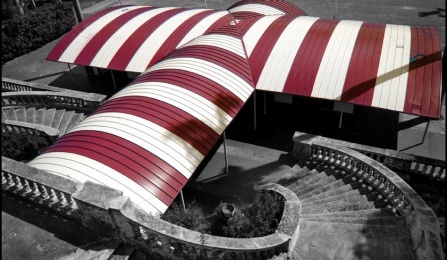
Artwork by Gory (Rogelio López Marín)
Guitart, Jorge
Interview excerpts:
I was always interested in painting and I remember being very impressed when I was like 14 or 15 by some Paul Klee paintings I saw in a magazine. ‘Wow, what is this?' It looked childish but it wasn't. He has had an impact on my aesthetic greater than perhaps any other painter. I also love Modigliani, the faces and the bodies. Those are my two favorite artists of the twentieth century: Klee and Modigliani.
When I came to the States, since I had two years of law school in Cuba – it was Roman Law and the Napoleonic code, the Spanish code – there was nothing to be transferred to liberal arts. I didn't get any credit for what I had done in Cuba. By that time I had acquired an interest in psychology and ‘Know Thyself.' I started a B.A. when I was 26. That was in Washington D. C. where I was. I had lived briefly in New Orleans when I came from Cuba but I had a girlfriend in Cuba who went to live in D.C. when she came from Cuba. So I went after her. We broke up in less than a year and I stayed in D.C.. I finished a B.A. in psychology in 1967 at the age of 29, and then I went to Georgetown. I had taken a couple of courses in linguistics when I was a psych major and I loved it. I said ‘this is what I want to do.' And I heard that Georgetown had Spanish linguistics. After all, I already know Spanish and I know linguistics so I ‘m going to do this. So I went to Georgetown and got a PhD in linguistics and Spanish with a minor in Latin American literature. Then I came to Buffalo, which was my first job.
I want to keep on painting and I want to keep on writing poetry and I want to keep on doing linguistics. I just published a book on phonetics; and now I'm working on one on semantic roles …
Llera, Juan Carlos
Juan Carlos Llera was born in Sagua La Grande, Cuba, on January 26, 1965. He emigrated to the United States in 1972 and settled in Miami. He began studying art with his father who was also an artist and art teacher. After completing gen- eral studies he attended a number of universities and colleges as an art major. When he was 20 years old he met Emilio Falero, and studied under him for five years. He began exhibiting in 1993. That year, he was awarded “Best in Show” at the 35th Annual Memorial Hortt Competition Exhibition, held at the Museum of Art, Fort Lauderdale. As a consequence of the award the artist began his professional carreer as an exibiting artist and now has work in private and public collections all over the World.
Juan Carlos Llera
Fear of Flight, 2004-2005
López-Ramos, Rafael
Artist Statement: My current works revisit methods previously resorted to in my series Aporías del alma cubana, created in the mid 90s, while still living in Havana. Those works gathered different meaning constructions that have emblematized Cuba throughout its history. This includes realistic renderings of tropical fruits paraphrasing the gaze of Cuban colonial Painting, the syncretism of Afro-Cuban religious symbols and Catholic images, and the Revolution’s propaganda iconography. It all is now mixed with typical Americana popular culture characters, and esoteric symbols related to the American political tradition, in a carnivalesque cocktail of dissimilar narratives that may be the best embodiment of the cultural, philosophical and political paradoxes faced by the Cuban soul today, in a contemporary living example of the Aristotelian concept of Aporia.
Artwork by Rafael López-Ramos
Luna, Carlos
Weaving together the artistic roots of his native Cuba with influences from Mexico, Carlos Luna’s art explores the layers of personal and popular stories that have shaped his world. In Deep Line Drawings, the artist invites viewers to experience the depth of the line and the richness that is underneath the skin of his work. Luna incorporates cultural symbols and language in his use of traditional processes to reveal a vibrant look at modern perceptions of Latin America.
Carlos Luna was born in Pinar del Rio, Cuba in 1969. Luna’s work is semi-autobiographical and reflects the influence of the three countries where he has lived, in particular the rural Cuba of his childhood. Luna grew up in an area where the beliefs and culture of the Cuban descendants of African Yoruba culture are particularly strong. The sacred forest is home to medicinal plants and the deified ancestors, orishas, whose symbols often appear in Luna’s work. Eyes are a recurring theme, reflecting both the watchful government as well as Eleggua, the Afro-Cuban trickster god who observes human folly and accomplishment.
Martínez de Valdivielso, José
Artwork by José Martínez de Valdivielso
Mendoza, Alejandro
Artist Statement: I am, by default, the illustrator of my ideas, even though; I seem to lie to myself constantly. Creating is the most “bestial” process of my conclusions.It is the energy of starting something without exactly knowing the actual outcome. My environments are constants on my aesthetic proposal, which is tied to the parallel need to understand common sense and making my interpretationof it more or less acceptable or understandable. Creating is the experience of being constantly unsatisfied. When this happens, I should redo and lie to myself again.
Artwork by Alejandro Mendoza
Mendoza, Tony
Antonio Mendoza was born in Havana and moved to Miami with his family in 1960. He graduated from Yale with a Bachelor of Engineering and Harvard with a Master of Architecture, before becoming a full-time photographic artist in 1973. Married to Maria del Carmen from Esperanza, Cuba, and they have two children Alex and Lydia. Mendoza taught in the photography department at the Ohio State University in Columbus, Ohio from 1988 until his retirement in 2013. His most famous book, Ernie, is a photographic memoir centered on a cat he encountered when he moved into an apartment in New York City. Mendoza has received three National Endowment for the ArtsFellowships, a Guggenheim Photography Fellowship as well as two Creative Writing fellowships from the Ohio Arts Council.
Artwork by Alejandro Mendoza
Novoa, Glexis
Glexis Novoa was born in Holguín, Cuba, in 1964. He grew up in Havana and received a degree from the National School of Arts in 1984. He lives in Miami, USA. Since 1995 and shares his time working on his studios in Vedado, Havana and Wynwood, Miami. Novoa also works on site specific wall drawings and eephemeral projects around the world. Since 1987 his work has been exhibited nationally and internationally. He has had solo presentations at Cheekwood Museum, Nashville, Tennessee; Lowe Museum, Coral Gables, Florida; ’Worcester Art Museum,Worcester, Massachusetts; Locust Project Miami Miami, Florida; Miami Art Museum, Miami, Florida; The Snite Museum of Art, University of Notre Dame, Notre Dame, Indiana; Espacio Aglutinador, Havana, Cuba; Castillo de la Real Fuerza, Museo Nacional de Bellas Artes, Havana, Cuba and Galería Habana, Havana, Cuba, among many other venues.
Artwork by Glexis Novoa
Perdomo Bermúdez, Natasha
Natasha Perdomo chooses the landscape to reflect on postindustrial civilization while giving a wink to certain kitschy aesthetic traditionally associated to this painting genre. Her work brings together the back lighting and architectural ruins, elements so deeply anchored in Romanticism. However, her pre apocalyptic vision is infused with a nightmarish atmosphere that has more of a premonition than a remembrance..
Artwork by Natasha Perdomo Bermúdez
Rey, Alberto
Born in Havana, Cuba in 1960, Alberto Rey received his political asylum through Mexico in 1963 and moved to Miami, Florida in 1965. In 1967, his family relocated to Barnesboro, Pennsylvania. He lived in this small coal-mining town until 1982 when he finished his B.F.A from Indiana University of Pennsylvania after attending the Art Institute of Pittsburgh. His artwork over the past 25 years has been influenced by his Cuban lineage and his attempt to find a sense of identity in a complex contemporary environment. His abstract work from 1982 through 1992 dealt with issues related to layered memories of Cuban iconography and his American experiences. After 1992, his drawings and paintings incorporated realistic imagery as an attempt to make clear connections between his past concerns and art history, regionalism, and his bi-cultural concerns. Since his relocation to western New York in 1989, he also performed extensive research on local entomology and on the migratory and biological sensibilities of the regional steelhead. In 2000, his reflections on contemporary society started to incorporate environmental issues, perspectives in contemporary art theory and art history, biology and society’s disconnections with nature. At that point, he also began to work in film and video. His research has taken him throughout the United States, Wales, England, Isle de Saintes (Antiqua), Aruba, Mexico, Spain, Cuba, Iceland and Italy.
Rodríguez, Arturo
Arturo Rodríguez was born in the small town of Ranchuelo, province of Las Villas, Cuba on February 6th, 1956. At the age of ten his interest in art was awakened by his aunt Silvia Rodríguez, who gave him pencils and papers and what few art books were available.
In 1971, his family went into exile in Spain, living first in Asturias and later in Madrid, where Arturo Rodríguez “discovered” the Prado Museum. It was at the Prado where he encountered the work of both Velázquez and Goya; their depictions of the human figure and the very nature of painting as found in their canvases had a great impact on him. In 1973, his family settled in Miami, where he completed high school and studied life drawing very briefly at Miami Dade Community College. It was at this time that Rodríguez came in contact with the great music of the United States: blues and jazz. This music, with its element of both grief and improvisation provided the artist with important elements that would develop in his work.
During the 1980s, Rodríguez continued to travel throughout Europe, revisiting Spain to study again the works of the 17th century Spanish masters and of Goya, and Italy, where the painterlyness of the Venetians (Giorgione, Titian, and Veronese) also provided significant lessons. He now lives and works in Miami, Florida.
Artist Statement: My work deals with strictly pictorial ideas and follows the tradition of the human figure as well as the tradition of painting. It does not look for a position (political, philosophical, religious, etc); it is an effort to know, to understand, to grasp different aspects of reality as I see it.
My work is not nostalgic or tries to redistribute history and destiny to my own purposes but tries to concentrate on the idea of displacement in a universal manner, filtering those experiences in mainly unconscious images that come out in the execution of the work, through drawing, composition and color.
Artwork by Arturo Rodríguez
Salinas, Baruj
Baruj Salinas, a Jewish Cuban artist, was born in Havana, Cuba in 1935. His ancestors came from a small town in the north of Spain, which was known for its salt mines (Minas de Sal). Following the Jews expulsion from Spain in 1492, many Jewish families went to Turkey. Baruj Salinas’s family settled in Silibria, Turkey, a small town west of Istanbul. His family lived in Turkey until the 1920’s when, as a result of the Greco-Turkish Wars, many Jewish families decided to move to the Americas, settling in Cuba.
Baruj Salinas started painting from a very young age, influenced by his mother Regina Algazi de Salinas. In 1958 he received his degree in architecture from Kent State University in Ohio. After his exile from Cuba in 1959, he moved to Miami where he worked as an architect and continued with his painting. In 1969 he received the Oscar B. Cintas scholarship that was created by the Cuban philanthropist. In 1974 Baruj Salinas moved to Barcelona, Spain, where he worked closely with painters of the stature of Joan Miró and Antoní Tàpies. His early paintings were influenced by his architectural background but gradually he moved toward an abstract expressionistic language. Because of his collaboration with poets and writers in Europe, Baruj Salinas developed his personal concept of the ‘Language of the Clouds’, which consists basically of a grey background with white as the main color of the palette - white symbolizing clouds. For these series of paintings he used pictograms, ideograms, as well as Greek, Hebrew and symbols from the Iberian alphabet.
Sierra, Paul
Artist Statement: Having been born in Cuba but living most of my adult life in the U.S, I find influences from North American art and culture intertwined with my artistic and emotional links to my Latin roots.
Art has provided me a means for leaving the past behind; not getting lost in the limbo between the old and the new. Art is of great help to the immigrant, allowing him to transform the chaos of his life into a positive vision.
Art heals the spirit by virtue of the creative act, which helps us to find a new identify in our memories and myths. The act of painting becomes the act of memory, a line drawn from the present to the past and back again, establishing our identity as a person.
We seek continuity in the face of disjuncture. And we find it by making ourselves the hero of our own personal odyssey.
Artwork by Paul Sierra
Soriano, Rafael
Born in 1920 in the town of Cidra in the province of Matanzas, Rafael Soriano manifested an early inclination for painting. After completing seven years of study at Havana’s prestigious Escuela Nacional de Bellas Artes San Alejandro, he graduated in 1943 as Professor of Painting, Drawing and Sculpture. He then returned to Matanzas where he taught visual arts for close to two decades.
He was one of the founders, and later Director, of the Escuela de Bellas Artes de Matanzas, the most important art school in Cuba outside of Havana. During this time, he participated with Los Diez Pintores Concretos known for bringing the geometric abstraction movement from Europe and the Americas to Cuba. In 1962 Soriano went into exile, settling in Miami with his wife Milagros and his daughter Hortensia. He worked as a graphic designer and occasionally taught, first at the Catholic Welfare Bureau, and later at the Cuban Cultural Program of the University of Miami. He continued to paint tirelessly in the evenings.
Artwork by Rafael Soriano
Soto, Leandro
Leandro Soto is a multidisciplinary visual/installation and performance artist who has been internationally involved with the arts for the past thirty two years. Soto was one of the leading figures of the influential “Volumen Uno”, an artistic movement that changed the course of Cuban Art in the decade of the 1980’s, in which he was the first artist in his generation to work with the Afro-Cuban heritage. In his current work Soto continues to draw simultaneously on European and non-European cultural heritages and art forms -- acquired as a result of his traveling and living in numerous cultures. Soto contributes to the rich cross-cultural dialogue in contemporary arts.
Soto has participated in more than 162 group exhibitions and 91 solo art shows in museums, art galleries, and alternative art spaces in Spain, Canada, Brazil, Mexico, Czech Republic, Germany, Peru, Japan, Nicaragua, Jamaica, Italy, Cuba, India, and the United States, among others. His art is in the permanent collections of important museums: National Museum of Fine Arts in Havana, Cienfuegos Art Museum, Cuba; Art Museum of Fort Lauderdale, Lowes Museum, MOCA Florida, New Delhi Global Arts Village Collection, the Florida International University Art Collection. His art is also in the collection of Higher Education institutions such as Mount Holyoke College Art Museum, Wheaton College Art Museum, Jerome Lawrence And Robert E. Lee Theater Research Institute at Ohio State University, and in the Cuban Heritage Collection at the University of Miami.
In his performances and the visual/installation art which emerge from his performances, Soto responds to the postmodern coordinates of implosion and satire, often subverting the inceptions of culturally accepted notions of high/kitsch, traditional/pop, global/local, and profane/sacred art forms. The key to understanding his work lies in the inner organization of the form and its metaphoric implications -- the synthesis and integration of values raising personal and cultural awareness.
Vizcaíno, Pedro
Pedro Vizcaíno is and admirer of the lunatic drawings of madmen and of the spontaneous drawings of children. These drawings want to open a gap or a pathway between figurative art and abstract art. They are drawings that reproduce imaginary characters [as airplanes, cars, handguns, shoes] that convey to us in an ironic, humoristic fashion a vision of the environment of society and history. Colored pencils and ink are the skeleton, the structure of these are driven by ideas that buck the socio-political notions that inform most art and art criticism today. The principal theme in his art is the way in which action becomes part of an image as opposed to the more common reverse approach-using an image to depict some kind of action. In his representation of action and its aural spaces Vizcaíno combines elements of sculpture, drawing, and painting and he freely juxtaposes the frantic textures of a child’s turgid crayon scribbling with images that might otherwise evoke delicacy, eros, and filth.
Artist Statement: "I choose drawing because it’s the most basic form of human expression. Generally I work on paper with colored pencils and ink, leaving blank spaces that compensate for the lines and spots made by the colored pencils. They exude a passion for color and also for the frenetic spontaneity of children’s drawings.”
Gallery
Institutional Collections
- Frost Art Museum
Miami International University, Florida
- The Museum of Art in Fort Lauderdale, Florida
- The Ludwig Forum for International Art
Aachen, Germany
- Lehigh University Art Galleries
Bethlehem, Pennsylvania
- Museo Nacional de Bellas Artes
La Habana, Cuba
“An interview with María Magdalena Campos-Pons, a Cuban artist whose works explore the intersection of art and autobiography.”
Alvarez, Pedro. 2000. How Havana Stole from New York the Idea of Cuban Art. Smart Art Press.
1985. The American Experience: Contemporary Immigrant Artists. Exhibition Catalogue. Philadelphia and New York: The Balch Institute of Ethnic Studies.
Baker, Nicholas. 2002. A Book of Books: Photographs by Abelardo Morell. New York: Bulfinch Press.
Bal, Mieke. 1999. Quoting Caravaggio: contemporary art, preposterous history. Chicago, Ill.: University of Chicago Press.
Berthot, Lillian. 1997. La Generación del Mariel. Miami: Cuban-American National Foundation.
Blanc, Blanc. 1993. Cuban Artists of the Twentieth Century. Fort Lauderdale: Fort Lauderdale Museum of Art.
____. 1984. The Miami Generation Exhibition Catalogue. Miami: Cuban Museum of Arts and Culture.
____. 1990. The Post-Miami Generation. Exhibition Catalogue. Miami: Cuban Museum of Arts and Culture.
____, et. al. 1991. Cuba/U.S.A.: The First Generation. Exhibition Catalogue. Washington, D.C.: El Fondo del Sol.
Block, Holly. 2001. Art Cuba: The New Generation. New York, N.Y.: Abrams.
Blocker, Jane. 1999. Where is Ana Mendieta? Identity, Performativity, and Exile. Durham, NC: Duke University Press.
Bosch, Lynette M.F. 1993. Islands in the Stream: Seven Cuban-American Artists. Cortland, NY: SUNY Cortland.
____. 2004. Cuban-American Art in Miami: Exile, Identity and the Neo-Baroque. London, U.K.: Lund Humphreys Press.
____. 1997. Past Cuba-Identity and Identification in Cuban-American Art. Exhibition Catalogue. Fairfield, CT.: Fairfield University and St. Lawrence University.
Boswell, Thomas D. and James R. Curtis. 1984. The Cuban-American Experience: Culture, Images and Perspectives. Totowa, NJ: Rowman & Allanheld.
Brown, David H. 2003. Santería Enthroned: Art, Ritual and Innovation in Afro-Cuban Religion. Chicago, Il.: University of Chicago Press.
Camnitzer, Luis. 1994. New Art of Cuba. Austin: Texas: University of New Mexico Press.
Cockcroft, James D. and Jane Canning. 2000. Latino Visions: Contemporary Chicano, Puerto Rican and Cuban-American Artists. Franklin Watts Press.
Crimp, Douglas. 1993. On the Museum’s Ruins. Cambridge, Massachusetts and London: MIT Press.
____. 1984. “Pictures,” in Art After Modernism: Rethinking Representation. ed. Brian Wallis. New York and Boston: New Museum of Contemporary Art. pp. 175-87.
1996. Cuba Sigo XX: modernidad y sincretismo. Exhibition Catalogue. Islas Canarias: Centro Atlántico de Arte Moderno.
Damian, Carol. 1997. Breaking Barriers: Selections from the Museum of Art's Permanent Contemporary Cuban Collection. Exhibition Catalogue. Fort Lauderdale, Fla.: Fort Lauderdale Museum of Art.
Foster, Hal. 1984. “Re: Post,” in Art After Modernism: Rethinking Representation. ed. Brian Wallis. New York and Boston: New Museum of Contemporary Art. pp. 189-201.
Fuentes-Pérez, Ileana et. Al. 1987. Outside Cuba/Fuera de Cuba. Exhibition Catalogue. New Brunswick, N.J.: Rutgers University Press.
Gómez-Sicre, José. 1987. Art of Cuba in Exile. Miami, Fla.: Editorial Munder.
González Mandri, Flora. 2006. Guarding Cultural Memory: Afro-Cuban Women in Literature and the Arts. Charlottesville: University of Virginia Press.
Gracia, Jorge J. E., Lynette Bosch and Isabel Alvarez Borland, eds. Identity, Memory, and Diaspora: Voices of Cuban-American Artists, Writers, and Philosophers. Albany, NY: SUNY Press, 2007.
Herrera, Andrea O'Reilly. Forthcoming 2008.'Setting the Tent Against the House': Cuban Art in the Diaspora. Albany, NY: SUNY Press .
Jaffee McCabe, Cynthia, and Daniel J. Boorstin. 1976. The Golden Door: Artist-Immigrants of America, 1876-1976. Exhibition Catalogue. Washington, D.C.: Smithsomian Institution Press.
Jameson, Fredric. 1991. Postmodernism, or, The Cultural Logic of Late Capitalism. Durham, North Carolina: Duke University Press.
Joselitt, David. 2005. “Notes on Surface: Toward a Genealogy of Flatness,” in Theory in Contemporary Art Since 1985. ed. Zoya Kocur and Simon Leung. Malden, MA and Oxford: Blackwell Publishing. pp. 292-308.
____. 1999. Loin de Cuba. Exhibition Catalogue. Aix-en-Provence, France: Musèe des Tapisseries.
Kuebler, Joanne. 1987. Art of the Fantastic: Latin America, 1920-1987. Indianapolis: Indianapolis Museum of Art
Layers: Collecting Cuban-American Art. 2006. Coordinated by Lynette M. F. Bosch. Directions and Foreword by Jorge J. E. Gracia. Buffalo, NY: University at Buffalo Art Gallery.
Loomis, John A. 1999. Revolution of Forms: Cuba's Forgotten Art Schools. Princeton, N.J.: Princeton Architectural Press.
López, Antonio and David Hart. 2005. Memory and the Installation Art of M. M. Campos Pons. (UNC dissertation).
Martínez, Juan A. 1994. Cuban Art and National Identity: The Vanguardia Painters 1927-1950. Gainesville, Fla.: University Press of Florida.
____. 2000. “Lo blanco-criollo as lo cubano in the Symbolization of a Cuban National Identity in Modernist Painting of the 1940s,” in Cuba, The Elusive Nation: Interpretations of National Identity. ed. Damian J. Fernández and Madeline Cámara. Gainesville : University Press of Florida.
Mendoza, Tony. 1999. Cuba: Going Back. Austin: University of Texas Press.
Mosquera, Gerardo. 1999. Contemporary Art from Cuba. Delano Greenridge Press.
Owens, Craig. 1998. “The Allegorical Impulse: Toward a Theory of Postmodernism,” in The Art of Art History: A Critical Anthology. ed. Donald Preziosi. Oxford and New York: Oxford University Press. pp. 315-28.
____. 1992. “The Discourse of Others: Feminists and Postmodernism” in Beyond Recognition: Representation, Power, and Culture. eds. Scott Bryson et. al. Berkely, Los Angeles, and London: University of California Press. pp. 166-90.
Sante, Luc. 2004. Camera Obscura: Photographs by Abelardo Morell. New York: Bulfinch Press.
Santis, Jorge, and Carol Damian. 1997. Breaking Barriers: Selections from the Museum of Art's Permanent Contemporary Cuban Collection. Fort Lauderdale, FL: Museum of Art Fort Lauderdale.
Simic, Charles and Jennifer Gross. 1998. Abelardo Morell: Face to Face. Boston: Isabella Stewart Gardner Museum.
Veigas, José et. al. 2003. Memoria: Cuban Art of the 20th Century. Los Angeles, Ca.: California International Arts Foundation.
Viera, Ricardo. 2001. Latin American Artist Photographers from the Lehigh University Art Galleries Collection Bethlehem, PA: Lehigh University Art Galleries/Museum Operation.
Viso, Olga. 1997. Carlos Alfonzo: Triumph of the Spirit. Miami: Miami Art Museum Seattle: Distributed by University of Washington Press, 1997.
Wallis, Brian. 1984. Art After Modernism: Rethinking Representation. New York and Boston: New Museum of Contemporary Art.
Williams, Robert, et al. 2004. Pop Surrealism: The Rise of Underground Art. San Francisco, Calif.: Ignition Pub. / Last Gasp.
Woodward, Richard B. 2005. Abelardo Morell. London: Phaidon Press.
Zuver, Marc. 1991. Cuba-USA: The First Generation. Washington, DC: El Fondo del Sol.
Smithsonian Institution, Archives of American Art Finding Aids (2006):
Cundo Bermúdez Papers (retrieved 2006, http://www.aaa.si.edu/findaids/bermcund/bermcund.htm)
Giulio V. Blanc Papers (retrieved 2006, http://www.aaa.si.edu/findaids/blangiul/blangiul.htm)
Margarita Cano Papers (retrieved 2006, http://www.aaa.si.edu/findaids/canomarg/canomarg.htm)
Ramón Carulla Papers (retrieved 2006, http://www.aaa.si.edu/findaids/caruramo/caruramo.htm)
Humberto Dionisio Papers (retrieved 2006, http://www.aaa.si.edu/findaids/dionhumb/dionhumb.htm)
Hernan García Papers (retrieved 2006, http://www.aaa.si.edu/findaids/garchern/garchern.htm)
Abril Lamarque Papers (retrieved 2006, http://www.aaa.si.edu/findaids/lamaabri/lamaabri.htm)
Enrique Riverón Papers (retrieved 2006, http://www.aaa.si.edu/findaids/riveenri/riveenri.htm)
Baruj Salinas Papers (retrieved 2006, http://www.aaa.si.edu/findaids/salibaru/salibaru.htm)
Emilio Sanchez Papers (retrieved 2006, http://www.aaa.si.edu/findaids/sancemil/sancemil.htm)
Scull Family Papers (retrieved 2006, http://www.aaa.si.edu/findaids/sculfami/sculfami.htm)
Smithsonian Institution, Archives of American Art Oral Histories Interviews:
José Bedia, February 13, 1998, conducted by Juan Martínez
María Brito, October 25, 1997, conducted by Juan Martínez
Ramon Cernuda, March 28, 1998, conducted by Juan Martínez
Enrique Guy Garcia, March 18, 1998, conducted by Juan Martínez
José Mijares, January 17, 1998, conducted by Juan Martínez
Ruben Torres Llorca, January 13, 1998, conducted by Juan Martínez
Rafael Soriano, December 6, 1997, conducted by Juan Martínez
Arturo Rodriguez, November 14, 1997, conducted by Juan Martínez
Demi (Rodriguez), November 29, 1997, conducted by Juan Martínez
